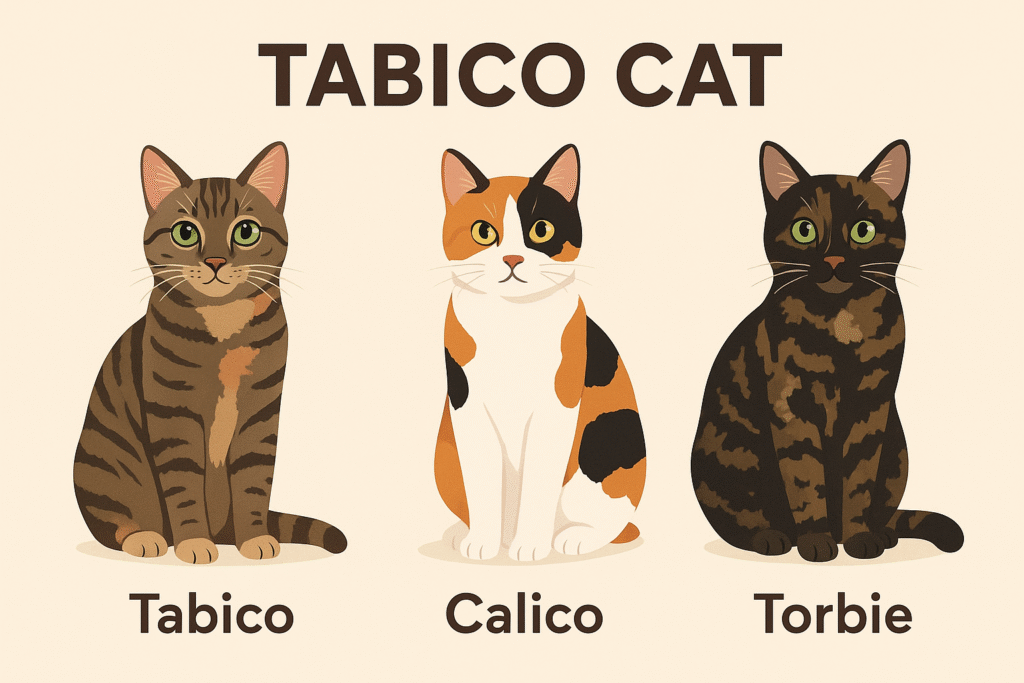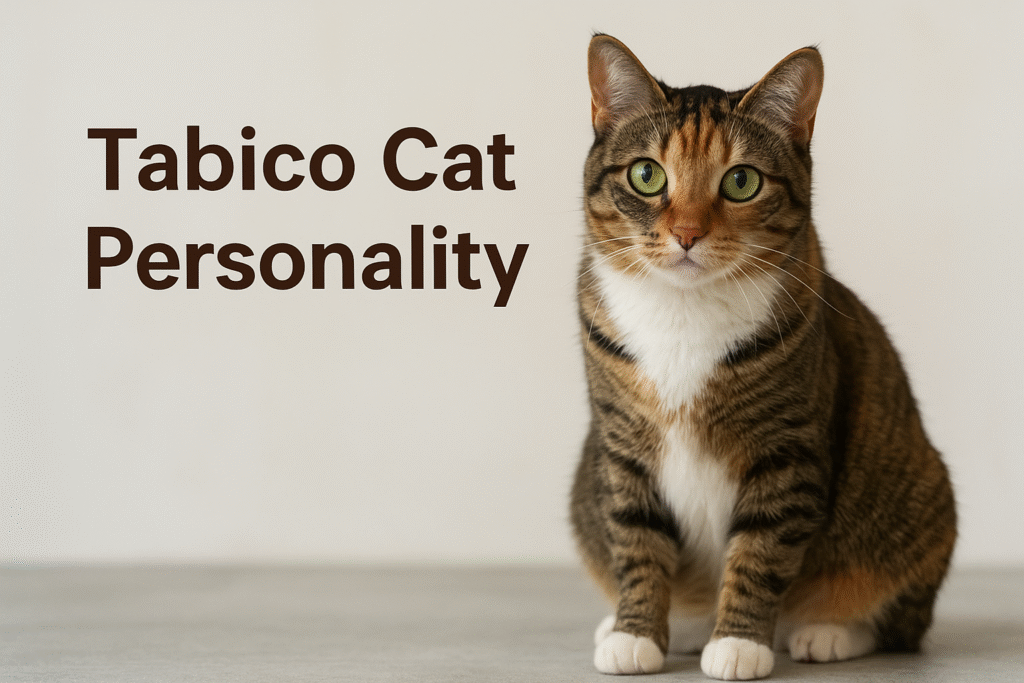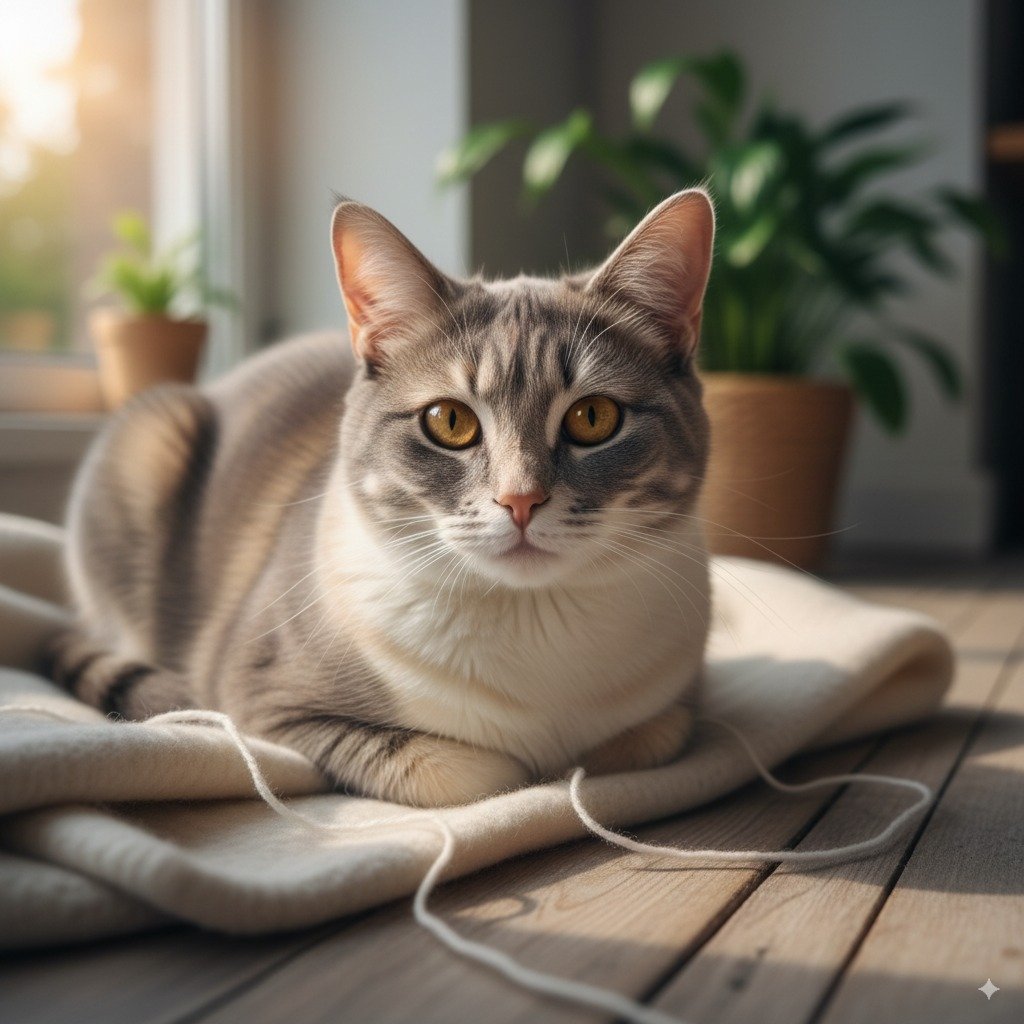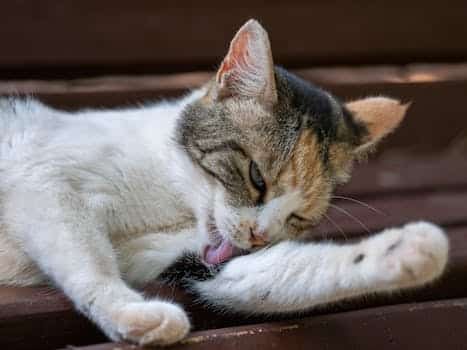Post Disclaimer
Catopedea shares information for educational and general interest purposes only. Our content is not a substitute for professional veterinary advice, diagnosis, or treatment. Always consult a licensed veterinarian for concerns about your cat’s health, diet, or behavior.
Cats have an endless variety of coat colors and patterns, but every so often you come across a feline whose markings make you stop in your tracks. One of those striking patterns is the tabico cat. If you’ve never heard the term before, you’re not alone. A tabico is not a breed it’s a unique combination of two popular coat patterns: tabby and calico. The result is a one-of-a-kind cat with swirling stripes, bold patches, and a personality that is just as unforgettable as its appearance.
In this guide, we’ll explore everything you need to know about tabico cats: what they are, how rare they are, their personalities, and how to care for one.

What Is a Tabico Cat?
A tabico cat is a feline that displays both tabby and calico coat patterns.
- Tabby cats have stripes, spots, or swirling patterns, often with the classic “M” on their forehead.
- Calico cats have a tri-color coat usually orange, black, and white.
When the two patterns combine, you get a tabico: a cat with the tri-color palette of a calico but also showing visible stripes or tabby markings within the colored patches.
This mix creates a coat that looks like an artist painted it with a mix of bold strokes and fine lines. Every tabico is unique, and no two look the same.
Are Tabico Cats Rare?
Yes, tabico cats are relatively rare, though not as rare as some believe. Since calico itself is a genetic pattern that primarily occurs in females (due to the X chromosome link), most tabicos are also female.
- Male tabicos are extremely rare. Just like male calicos, they occur in only about 1 in 3,000 cases. Most male tabicos are sterile because of chromosomal differences (XXY).
- Female tabicos, while uncommon, are more likely to be seen than their male counterparts.
So if you meet a tabico, you’re meeting a special feline especially if it’s male.
Tabico Cat Personality & Facts: Sweet, Sassy & Rarely Seen

One of the most common questions is whether tabico cats have distinct personality traits. The truth is, their temperament is influenced more by breed, socialization, and upbringing than coat color. However, cat owners often swear that their tabicos have big personalities.
Commonly reported personality traits include:
- Playful and curious – thanks to the tabby influence.
- Independent yet affectionate – calico cats are known for being loyal to “their” human.
- Strong-willed – many tabico owners describe them as having a little “cat-titude.”
- Adaptable – they handle new situations with a mix of curiosity and caution.
It’s important to remember that personality is shaped by experience. A rescued tabico may behave differently from one raised in a loving home since kittenhood.
Dilute Tabico Cats

A special variation is the dilute tabico cat. Instead of the bold orange, black, and white calico colors, dilute tabicos have softer shades:
- Gray or blue instead of black
- Cream instead of orange
- White remains present
This gives them a pastel, watercolor-like appearance that is just as rare and beautiful.
Caring for a Tabico Cat
Since “tabico” refers to coat pattern rather than breed, caring for one is the same as caring for any other domestic cat. The key is to focus on their health, enrichment, and emotional well-being.
Nutrition
- Feed a balanced, high-protein diet with wet food included to support hydration.
- Avoid overfeeding tabicos, like all cats, are prone to weight gain if kept indoors without enough exercise.
Grooming
- Short-haired tabicos need weekly brushing to keep their coat shiny.
- Long-haired tabicos (common in mixes like Maine Coons or Persians) may need brushing every day to avoid mats.
Enrichment
- Provide scratching posts, climbing trees, and puzzle feeders.
- Rotate toys to prevent boredom.
Veterinary Care
- Schedule annual vet check-ups.
- Spay/neuter your tabico especially important if you happen to have a rare male.
- According to the American Veterinary Medical Association, the procedure not only prevents unwanted litters but also reduces the risk of certain health problems and unwanted behaviors.
Genetics Behind Tabico Cats
The tabico pattern happens due to X chromosome inheritance:
- The calico pattern is tied to the X chromosome. Since females have two X chromosomes, they can show both orange and black.
- Tabby striping is controlled by other genes that influence coat marking patterns.
- When these two overlap, you get the tabby striping within calico patches creating the tabico effect.
Male tabicos usually result from genetic anomalies (like XXY chromosomes), which is why they are so rare and often sterile.
Tabico Cats and Their Place in Cat Lore
Cats with unusual coats often find themselves surrounded by myths and legends. Calicos are considered lucky in many cultures (for example, Japanese “Maneki-Neko” beckoning cats are often calico). While “tabico” is not as widely recognized in folklore, many cat lovers see them as symbols of individuality and uniqueness.
Tabico Cat vs Calico and Torbie
It’s easy to confuse tabico cats with torbies or tortie-tabbies. Here’s the difference:
- Calico: tri-color, no tabby stripes.
- Torbie (Tortoiseshell + Tabby): a mix of tortoiseshell (orange and black) with tabby striping, but no white patches.
- Tabico: tri-color like a calico but with visible tabby stripes.
Think of a tabico as a striped calico, which makes them stand out in a lineup of patterned cats.
Fun Facts About Tabico Cats
- Most tabicos are female, just like calicos.
- No two tabico coats are the same. Each one is a genetic fingerprint.
- Male tabicos are so rare that some breeders and shelters celebrate them publicly when they appear.
- Dilute tabicos are highly sought after for their “painted in pastels” look.
When learning about scared cat body language, many owners realize that coat pattern is only one piece of understanding feline behavior.
FAQs About Tabico Cats
What is a tabico cat?
A tabico is a cat with both calico coloring and tabby striping. It is not a breed, but a coat pattern.
Are tabico cats rare?
Yes. They’re rarer than typical calicos. Male tabicos are extremely rare due to genetics.
Do tabico cats have unique personalities?
Not genetically, but many owners report playful, curious, and loyal personalities.
What breeds can be tabico?
Any breed that allows calico and tabby patterns such as domestic shorthairs, Maine Coons, Persians, and American Shorthairs.
What is a dilute tabico?
A dilute tabico has softer coat shades cream, gray, and white instead of black, orange, and white.
Conclusion
Tabico cats are a fascinating blend of tabby and calico patterns, bringing together the best of both worlds in appearance and personality. While they are not a separate breed, their unique coats and lively temperaments make them stand out among feline companions. Most tabico cats are female, with rare males being a true genetic exception.
If you are lucky enough to share your home with a tabico, you’ll enjoy a loyal, playful, and affectionate pet who keeps life interesting. With proper care, regular vet visits, and plenty of love, tabico cats can thrive as wonderful members of your family.
Whether you’re drawn to their rare coat patterns or their engaging personalities, one thing is certain tabico cats are a reminder of just how extraordinary and diverse our feline friends can be. If you’re curious about other unique feline personalities, don’t miss our guide on the Grey Calico Cat Personality.



Pingback: 200+ Tuxedo Cat Names for Your Kitten (2025 Guide) - catopedea.com
Pingback: Tortoiseshell Cats: Lifespan, Personality & Care Guide - catopedea.com